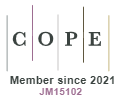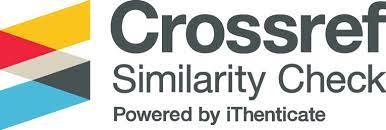Artifical intelligence in problems of risk assessment models in financial institutions from a legal and regulatory perspective
DOI:
https://doi.org/10.18778/2391-6478.1.33.07Keywords:
risk assessment models, artificial intelligence, bank, machine learningAbstract
Purpose of the article / hypothesis: This article aims to verify the need to introduce additional legal and regulatory requirements in relation to the models used in banks, including, in particular, risk assessment models. At the same time, the article analyzes the need for possible introduction of sector-specific guidelines, or the need to include the above-mentioned models in the classification of high-risk artificial intelligence systems, referred to in the draft EU regulation on artificial intelligence.
Methodology: The article is based on an analysis of the available literature on the subject, legal acts as well as regulations and standards developed both at the local and international level.
Research results / results: The issue of the application of models in the financial sector, mainly banking, is of significant importance from the perspective of the regulator and supervisor. Quality, compliance with the regulations, but also efficiency and effective supervision may constitute the (instability) of a given financial institution, the instability of which may be a component – at least potentially – of systemic risk. Banks commonly use internal models that generally allow the calculation of capital requirements to cover specific risks in a bank’s business, such as credit risk or market risk. Internal models have been evolving for years and are undoubtedly becoming more and more accurate (they predict with a greater probability the occurrence of certain events), although they are still only certain assumptions that reality can verify, as evidenced by financial crises that have already occurred in the past as well as failures of banks considered to be stable. At the same time, the development of new technologies, in particular the so-called artificial intelligence makes institutions more and more willing to use various models, e.g. machine learning, to support these models and obtain theoretically better results. The European Union, but also other jurisdictions are considering or already introducing specific legal and regulatory solutions that are to introduce clear rules related to the use of certain artificial intelligence systems, including those used by financial institutions. As a result, institutions – already burdened with significant regulatory requirements, may soon be obliged to go through another "health path" of a legal and regulatory compliance nature.
Downloads
References
Arner, D.W. and Taylor, M.W. (2017). The Global Financial Crisis and the Financial Stability Board: Hardening the Soft Law od International Financial Regulation? UNSW Law Journal, 32(2).
Google Scholar
BaFin (2021). Big data and artificial intelligence: Principles for the use of algorithms in decision-making processes https://www.bafin.de/SharedDocs/Downloads/EN/Aufsichtsrecht/dl_Prinzipienpapier_BDAI_en.pdf;jsessionid=B2256628BE44E99830AD2517B8177549.2_cid500?__blob=publicationFile&v=2 [dostęp 31.08.2021].
Google Scholar
Baskerville, R., Capriglione, F. and Casalino, N. (2020). Impacts, Challenges and Trends of Digital Transformation in the Banking Sector. Law and Economics Yearly Review, 9(2).
Google Scholar
BIS (1995). An internal model-based approach to market risk capital requirements. April, Bank Rozrachunków Międzynarodowych https://www.bis.org/publ/bcbs17.pdf [dostęp 31.08.2021].
Google Scholar
Borgo, M.D. (2020). Internal models for deposits: Effects on banks’ capital and interest rate risk of assets. Journal of Banking and Finance, August.
Google Scholar
Butor-Keler, A. (2020). Wybrane zagadnienia oceny zdolności kredytowej przedsiębiorstw. ZN WSH Zarządzanie, 1.
Google Scholar
Cerquiera, V., Torgo, L. and Soares, C. (2019). Machine Learning vs Statistical Methods for Time Series Forecasting: Size Matters. arXiv:1909.13316v1 [stat.ML] 29 Sep.
Google Scholar
Cunningham, S.J. (1995). Machine Learning and Statistics: A matter of perspective https://www.researchgate.net/publication/2791124_Machine_Learning_and_Statistics_A_matter_of_perspective [dostęp 31.08.2021].
Google Scholar
Dubber, M.D., Pasquale, F. and Das, S. (2020). The Oxford Handbook of Ethics of AI. Oxford.
Google Scholar
DOI: https://doi.org/10.1093/oxfordhb/9780190067397.001.0001
Dunis, Ch.L., Middleton, P.W. et.al (2016). Artificial Intelligence in Financial Markets. Cutting-edge Applications for Risk Management, Portfolio Optimization and Economics. Palgrave/MacMillan.
Google Scholar
DOI: https://doi.org/10.1057/978-1-137-48880-0
Dyrektywa Parlamentu Europejskiego i Rady (UE) 2019/1024 z dnia 20 czerwca 2019 r. w sprawie otwartych danych i ponownego wykorzystywania informacji sektora publicznego, Dz.Urz. UE z 2019 r., L 172/56.
Google Scholar
Dyrektywa Parlamentu Europejskiego i Rady 2013/36/UE z dnia 26 czerwca 2013 r. w sprawie warunków dopuszczenia instytucji kredytowych do działalności oraz nadzoru ostrożnościowego nad instytucjami kredytowymi i firmami inwestycyjnymi, zmieniająca dyrektywę 2002/87/WE i uchylająca dyrektywy 2006/48/WE oraz 2006/49/WE zmieniona przez Dyrektywę Parlamentu Europejskiego i Rady 2019/878 z dnia 20 maja 2019 r. zmieniająca dyrektywę 2013/36/UE w odniesieniu do podmiotów zwolnionych, finansowych spółek holdingowych, finansowych spółek holdingowych o działalności mieszanej, wynagrodzeń, środków i uprawnień nadzorczych oraz środków ochrony kapitału, Dz.Urz. UE z 2019 r., L 150/253.
Google Scholar
Dyrektywa Parlamentu Europejskiego i Rady w sprawie środków na rzecz wysokiego wspólnego poziomu cyberbezpieczeństwa na terytorium Unii, uchylająca dyrektywę (UE) 2016/1148 (Tekst mający znaczenie dla EOG) {SEC(2020) 430 final} – {SWD(2020) 344 final} – {SWD(2020) 345 final}.
Google Scholar
EBA (2020a). EBA Report on Big Data and Advanced Analytics. EBA/REP/2020/01, January.
Google Scholar
EBA (2020b). Wytyczne dotyczące udzielania i monitorowania kredytów. EBA/GL/2020/06, 29 maja.
Google Scholar
EBA (2021a). Study of the cost of compliance with supervisory reporting requirements. Report. EBA/Rep/2021/15 https://www.eba.europa.eu/sites/default/documents/files/document_library/Publications/Reports/2021/1013948/Study%20of%20the%20cost%20of%20compliance%20with%20supervisory%20reporting%20requirement.pdf [dostęp 30.09.2021].
Google Scholar
EBA (2021b). EBA analysis of RegTech in the EU Financial Sector. EBA/REP/2021/17, June https://www.eba.europa.eu/sites/default/documents/files/document_library/Publications/Reports/2021/1015484/EBA%20analysis%20of%20RegTech%20in%20the%20EU%20finan-cial%20sector.pdf [dostęp 30.09.2021].
Google Scholar
EBC (2019). ECB guide to internal models. October https://www.bankingsupervision.europa.eu/ecb/pub/pdf/ssm.guidetointernalmodels_consolidated_201910~97fd49fb08.en.pdf [dostęp 30.09.2021].
Google Scholar
EIOPA (2021). Artificial Intelligence Governance Principles: Towards Ethical and Trustworthy Artificial Intelligence in the European Insurance Sector. A report from EIOPA’s Consultative Expert Group on Digital Ethics in insurance, 2021 https://www.eiopa.europa.eu/sites/default/files/publications/reports/eiopa-ai-governance-principles-june-2021.pdf [dostęp 30.09.2021].
Google Scholar
French, R.M. (2020). The Turing Test: The First Fifty Years. Trends in Cognitive Sciences, 4(3).
Google Scholar
DOI: https://doi.org/10.1016/S1364-6613(00)01453-4
FSB (2020). The Use of Supervisory and Regulatory Technology by Authorities and Regulated In-stitutions Market developments and financial stability implications. 9 October https://www.fsb.org/wp-content/uploads/P091020.pdf [dostęp 30.09.2021].
Google Scholar
Gambacorta, L., Huang, Y., Qiu, H. and Wang, J. (2019). How do machine learning and non-traditional data affect credit scoring? New evidence from a Chinese fintech firm. BIS Working Papers, 834, December.
Google Scholar
Greenberg, B.A. (2016). Rethinking Technology Neutrality. Minnesota Law Review, 100:1495.
Google Scholar
Guitierrez, C.I., Marchant, G. and Tournas, L. (2020). Lessons for Artificial Intelligence from Historical Uses of Soft Law Governance. JURIMETRICS, 61(1).
Google Scholar
DOI: https://doi.org/10.2139/ssrn.3775271
Hagemann, R., Huddlestone Skees, J. and Thrierer, A. (2018). Soft Law for Hard Problems: The Governance of Emerging Technologies in an Uncertain Future. Colorado Technology Law Review, 17.1.
Google Scholar
Hendricks, D. and Hirtle, B. (1997). Bank Capital Requirements for Market Risk: The Internal Models Approach. FRBNY Economic Policy Review, December.
Google Scholar
HLEG, 2020, Sectoral Considerations on the Policy and Investment Recommendations for Trustworthy Artificial Intelligence, 23 July https://futurium.ec.europa.eu/sites/default/files/2020-07/Sectoral%20Considerations%20On%20The%20Policy%20And%20Investment%20Recommendations%20For%20Trustworthy%20Artificial%20Intelligence_0.pdf [dostęp 30.09.2021].
Google Scholar
Hoang, D. and Viegratz K. (2021). Machine Learning Methods in Finance: Recent Applications and Prospects https://finance.fbv.kit.edu/rd_download/Machine%20Learning%20Methods%20in%20Finance.pdf [dostęp 30.09.2021].
Google Scholar
KNF (2013). Rekomendacja T dotycząca dobrych praktyk w zakresie zarządzania ryzykiem detalicznych ekspozycji kredytowych.
Google Scholar
KNF (2015). Rekomendacja W dotycząca zarządzania ryzykiem modeli w bankach.
Google Scholar
KNF (2021) https://www.knf.gov.pl/knf/pl/komponenty/img/Metodyka_BION_bankow_2021_73447.pdf [dostęp 30.09.2021].
Google Scholar
Liebergen, B.V. (2017). Machine Learning: A Revolution in Risk Management and Compliance? The Capco Institute Journal of Financial Transformation, April 27.
Google Scholar
Lopez, J.A. and Saidenberg, M.R. (2001). The Development of Internal Models Approaches to Bank Regulation & Supervision: Lessons from the Market Risk Amendment, August 31 https://www.frbsf.org/economic-research/files/saidenberg.pdf [dostęp 30.09.2021].
Google Scholar
Marcinkowska, M. (2013). Regulation and self-regulation in banking: in search of optimum. Bank i Kredyt, 44(2).
Google Scholar
Micheler, E. and Whaley, A. (2020). Regulatory Technology: Replacing Law with Computer Code. European Business Organization Law Review, 21 https://doi.org/10.1007/s40804-019-00151-1.
Google Scholar
DOI: https://doi.org/10.1007/s40804-019-00151-1
Muller, A. C. and Guido, S. (2021). Machine learning, Python i data science. Wprowadzenie. Warszawa: Helion.
Google Scholar
NBP (2020). Innowacje w sektorze banków komercyjnych w Polsce, Maj, s. 14 https://www.nbp.pl/systemfinansowy/Ankieta_innowacje.pdf [dostęp 30.09.2021].
Google Scholar
Ostmann, D. and Dorobantu, C. (2021). AI in Financial Services. Alan Turing Institutie. Pothumsetty, R. (2020). Implementation of Artificial Intelligence and Machine learning in Financial services. International Research Journal of Engineering and Technology, 07(03), Mar.
Google Scholar
Prenio, J. and Yong, J. (2021). Humans keeping AI in check – emerging regulatory expectations in the financial sector. FSI Insights on policy implementation, 35, August.
Google Scholar
Projekt Rozporządzenia Parlamentu w sprawie operacyjnej odporności cyfrowej sektora finansowego i zmieniające rozporządzenia (WE) nr 1060/2009, (UE) nr 648/2012, (UE) nr 600/2014 oraz (UE) nr 909/2014, COM(2020) 595 final 2020/0266 (COD).
Google Scholar
Projekt Rozporządzenia Parlamentu Europejskiego i Rady w sprawie europejskiego zarządzania danymi (akt w sprawie zarządzania danymi), COM(2020) 767 final 2020/0340 (COD).
Google Scholar
Rampini, A.A., Viswanathan, S. and Vuillemey, G. (2019). Risk Management in Financial Institutions. Journal of Finance, July 2019, Forthcoming https://ssrn.com/abstract=2677051 [dostęp 30.09.2021].
Google Scholar
DOI: https://doi.org/10.3386/w25698
Raz, J. (1972). Legal Principles and the Limits of Law. The Yale Law Journal, 81.
Google Scholar
DOI: https://doi.org/10.2307/795152
Rozporządzenie Parlamentu Europejskiego i Rady (UE) 2016/679 z dnia 27 kwietnia 2016 r. w sprawie ochrony osób fizycznych w związku z przetwarzaniem danych osobowych i w sprawie swobodnego przepływu takich danych oraz uchylenia dyrektywy 95/46/WE (ogólne rozporządzenie o ochronie danych), Dz.Urz. UE 2016, L-119/1.
Google Scholar
Rozporządzenie Parlamentu Europejskiego i Rady (UE) 2019/876 z dnia 20 maja 2019 r. zmieniające rozporządzenie (UE) nr 575/2013 w odniesieniu do wskaźnika dźwigni, wskaźnika stabilnego finansowania netto, wymogów w zakresie funduszy własnych i zobowiązań kwalifikowalnych, ryzyka kredytowego kontrahenta, ryzyka rynkowego, ekspozycji wobec kontrahentów centralnych, ekspozycji wobec przedsiębiorstw zbiorowego inwestowania, dużych ekspozycji, wymogów dotyczących sprawozdawczości i ujawniania informacji, a także rozporządzenie (UE) nr 648/2012 , Dz.Urz. UE 2019, L-150/1.
Google Scholar
Rozporządzenie Parlamentu Europejskiego i Rady (UE) nr 575/2013 z dnia 26 czerwca 2013 r. w sprawie wymogów ostrożnościowych dla instytucji kredytowych i firm inwestycyjnych, zmieniające rozporządzenie (UE) nr 648/2012 zmienione przez Rozporządzenie Parlamentu Europejskiego i Rady (UE) 2019/876 z dnia 20 maja 2019 r. zmieniające rozporządzenie (UE) nr 575/2013 w odniesieniu do wskaźnika dźwigni, wskaźnika stabilnego finansowania netto, wymogów w zakresie funduszy własnych i zobowiązań kwalifikowalnych, ryzyka kredytowego kontrahenta, ryzyka rynkowego, ekspozycji wobec kontrahentów centralnych, eks-pozycji wobec przedsiębiorstw zbiorowego inwestowania, dużych ekspozycji, wymogów do-tyczących sprawozdawczości i ujawniania informacji, a także rozporządzenie (UE) nr 648/2012, Dz.Urz. UE 2019, L 150/1.
Google Scholar
Schmmitt, L. (2021). Mapping global AI governance: a nascent regime in a fragmented landscape. AI and Ethics https://doi.org/10.1007/s43681-021-00083-y.
Google Scholar
DOI: https://doi.org/10.1007/s43681-021-00083-y
Sztuczna inteligencja: co to jest i jakie ma zastosowania? (2020) https://www.europarl.europa.eu/news/pl/headlines/society/20200827STO85804/sztuczna-inteligencja-co-to-jest-i-jakie-ma-zastosowania [dostęp 20.02.2022].
Google Scholar
Thiele, M. and Dittmar, H. (2019). Internal Credit Risk Models with Machine Learning. W: V. Liermann and C. Stegmann, The Impact of Digital Transformation and FinTech on the Finance Professional, Cham: Palgrave Macmillan.
Google Scholar
DOI: https://doi.org/10.1007/978-3-030-23719-6_10
Toringo, R.d.S. (2017). Statistical Methods in Financial Risk Management. London: Department of Statistical Science University College London, April 19 https://discovery.ucl.ac.uk/id/eprint/1551579/1/Thesis.pdf [dostęp 30.09.2021].
Google Scholar
Trubek, D.M., Cottrell, P. and Nance, M. (2005). Soft Law, Hard Law and European Integration: Toward a Theory of Hybridity. Jean Monnet Working Papers, 2.
Google Scholar
DOI: https://doi.org/10.2139/ssrn.855447
Uchwała nr 196 Rady Ministrów z dnia 28 grudnia 2020 r. w sprawie ustanowienia „Polityki dla rozwoju sztucznej inteligencji w Polsce od roku 2020 r.”, M.P.2021.23 z dnia 2021.01.12.
Google Scholar
Ustawa z dnia 29 sierpnia 1997 r. Prawo bankowe z pózn. zm., Dz.U. 1997, nr 140, poz. 939.
Google Scholar
Weber, R.H. (2012). Overcoming the Hard Law/Soft Law Dichotomy in Time of (Financial) Crises. Journal of Governance and Regulation, 1(1).
Google Scholar
DOI: https://doi.org/10.22495/jgr_v1_i1_p1
Wischmeyer, T. and Rademacher, T., ed. (2020), Regulating Artificial Intelligence. Springer.
Google Scholar
DOI: https://doi.org/10.1007/978-3-030-32361-5
Zalewski, T. (2020). Definicja sztucznej inteligencji. W: L. Lai, M. Świerczyński, Prawo sztucznej inteligencji. Warszawa: C.H. Beck.
Google Scholar
Zieliński, T. (2013). Założenia teoretyczne formuły IRB w ocenie wymogu kapitałowego z tytułu ryzyka kredytowego banku. Bezpieczny Bank, 2–3(51–52).
Google Scholar
(www1) https://eur-lex.europa.eu/resource.html?uri=cellar:e0649735-a372-11eb-9585-01aa75ed71a1.0012.02/DOC_1&format=PDF [dostęp 31.08.2021].
Google Scholar
(www2) https://digichina.stanford.edu/news/translation-internet-information-service-algorithmic-recommendation-management-provisions [dostęp 1.09.2021].
Google Scholar
Downloads
Published
How to Cite
Issue
Section
License

This work is licensed under a Creative Commons Attribution-NonCommercial-NoDerivatives 4.0 International License.














